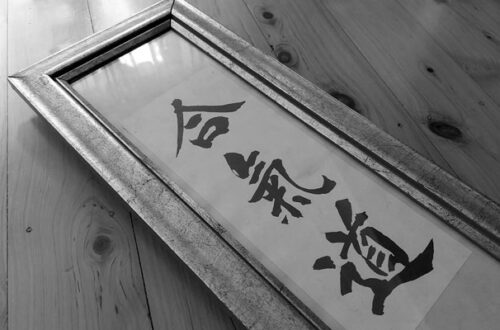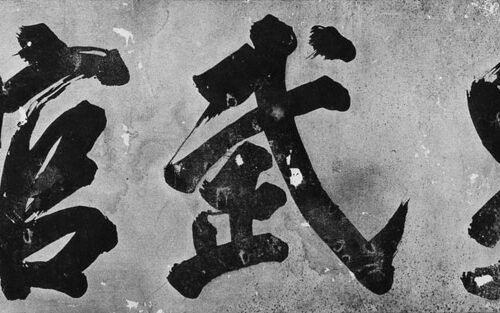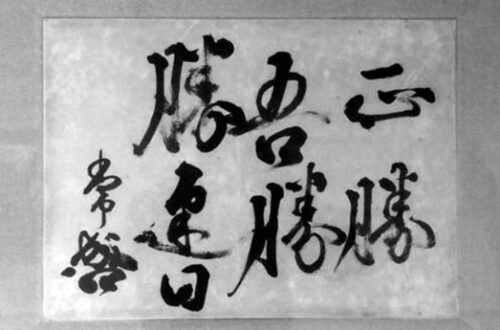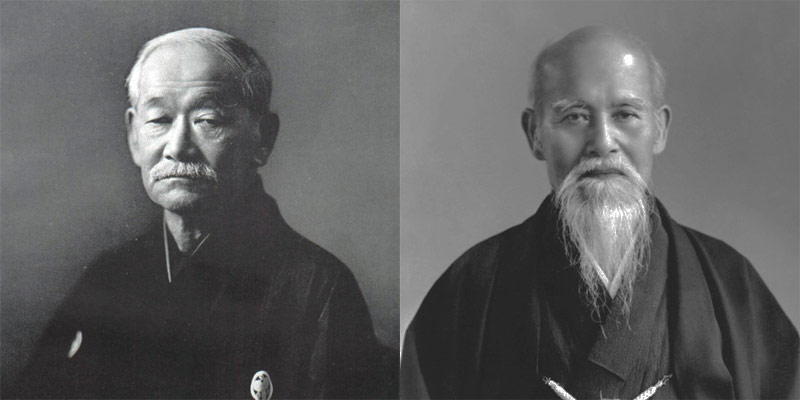
Morihei Ueshiba and Jigoro Kano: The Resonance of Two Great Masters
Morihei Ueshiba 植芝 盛平, the founder of Aikido, and Jigoro Kano 嘉納治五郎, the creator of Judo, were two of the most influential martial artists of the 20th century. While their approaches to martial arts differed significantly, they shared a deep mutual respect for each other and for the values of traditional Japanese Budo. Their interactions reflect an interesting dialogue between the preservation of martial tradition and the evolution of combat into a modern sport.
Jigoro Kano (1860–1938) was a visionary who sought to modernize traditional Jujutsu into a structured discipline suitable for education and competition. He mastered both Kito Ryu 起倒流 and Tenjin Shinyo Ryu 天神真楊流 Jujutsu 柔術. In 1882, Kano founded Kodokan Judo 講道館柔道 as a way to cultivate both physical and moral development, integrating rigorous training with principles of self-improvement. By removing the most dangerous techniques of Jujutsu and focusing on togi 投技 (throwing techniques) and kotsugi 固技 (submission techniques), Kano transformed Judo into a form that people could compete in through randori 乱取り, which later adapted into an international sport. At the same time, he recognized the downsides of losing other techniques, such as atemi waza 當身技 (striking techniques) and kansetsu waza 關節技 (joint locking techniques). From the late Taisho period 大正時代 (1912–1926), he made significant efforts to promote and preserve classical martial arts such as ken 剣, jo 杖, bo 棒, yari 槍, and naginata 薙刀. In 1928, he established the Kobudo Kenkyukai 古武道研究會 with the purpose of preserving and developing Koryu Bujutsu 古流武術.
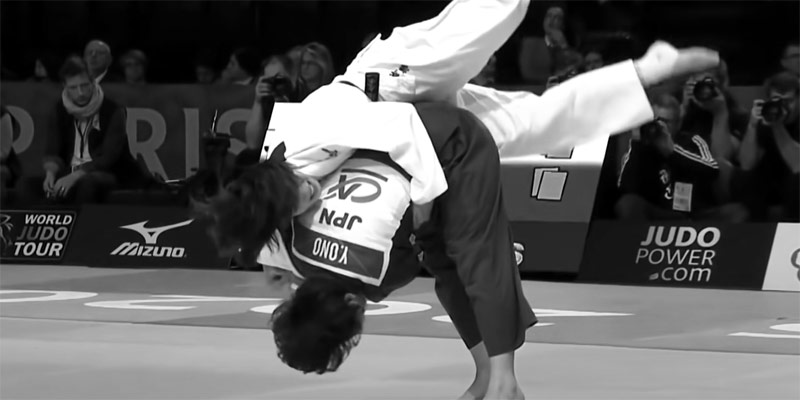
Judo became an official Olympic sport in the 1964 Tokyo Olympics
In contrast, Morihei Ueshiba (1883–1969), who was 23 years younger than Kano, pursued a different path. He entirely rejected the idea of turning Budo into sport. A student of several classical Jujutsu styles, particularly Daito-ryu Aiki-jujutsu, Ueshiba developed Aikido in the 20th century as a martial art deeply rooted in spiritual and philosophical principles. Unlike Judo, which emphasized contest and victory, Aikido sought harmony, non-resistance, and the resolution of conflict without direct opposition. Ueshiba preserved the traditional essence of Budo, emphasizing martial effectiveness while integrating elements of Shinto and pacifism.
Despite their philosophical differences, Kano and Ueshiba admired each other greatly. Kano recognized the depth of Ueshiba’s technique and saw in Aiki-jujutsu 合気柔術 (the precursor to Aikido) a sophisticated and refined form of Jujutsu. Ueshiba, in turn, respected Kano’s efforts in spreading martial arts as a means of education and physical culture.

Aikido integrates martial tradition with a philosophy of peace and balance
One of the most significant moments of their relationship occurred when Kano personally observed Ueshiba’s demonstrations at the Mejirodai 目白台 dojo in 1930. Kano was deeply impressed by Ueshiba’s abilities and philosophy, reportedly exclaiming, “This is the ideal martial art that I had in mind.” Perhaps he felt that Ueshiba’s strict pursuit of the path of Budo represented the painful compromise that he had to make with Judo. Kano’s admiration for Aikido went beyond words; he once told his close aides that he would like to welcome Ueshiba to Kodokan. Since Ueshiba was already a renowned master, Kano instead sent two of his serious disciples, Jiro Takeda 武田二郎 and Minoru Mochizuki 望月稔, to learn under Ueshiba. Kano also actively encouraged some of his top students to train under Ueshiba. Among them was Kenji Tomiki 富木 謙治, a distinguished Judoka who later became one of Ueshiba’s prominent disciples. Tomiki would go on to create Tomiki Aikido, a competitive form of Aikido that sought to blend Ueshiba’s philosophy with Kano’s structured, sport-oriented approach.
Though they approached martial arts from different perspectives, both Kano and Ueshiba shared a common goal: the cultivation of character and the betterment of society through martial discipline. Kano’s vision materialized through Judo’s worldwide popularity as an Olympic sport, while Ueshiba’s legacy remains in the peaceful and philosophical practice of Aikido.
Their mutual respect is a testament to the broad spectrum of martial arts, where the paths of tradition and modernization are not mutually exclusive but rather complementary. Their meeting and interaction symbolize the harmony between competition and philosophy, between innovation and preservation, showing that martial arts are not just about techniques but about a way of life.
Related reading: Kenji Tomiki and his Vision of Competitive Aikido
Author’s Note: We appreciate your readership! This article serves as a preliminary introduction to the subject matter. While we aim for accuracy, we cannot guarantee the content’s precision and it may contain elements of speculation. We strongly advise you to pursue additional research if this topic piques your interest. Begin your AikidoDiscovery adventure! 🙂


